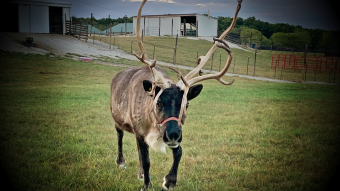June 21, 2022
Contact: Pate McCuien, 573-882-4870, McCuienP@missouri.edu
Everyone remembers those old high school movies where the ultra-nerdy teenage boy falls in love with a the most beautiful girl in the whole school. The movie begins with the girl not knowing anything about the geeky leading man that most wouldn’t consider a strong partner, but by the end, she’s fallen for him too. It’s a classic romantic movie formula.

However, new research from the University of Missouri suggests these relationships might be best left to the movies.
Sean Prall, an assistant professor of anthropology in the College of Arts and Science, traveled to northwest Namibia in southern Africa to study the behavior of Himba, a group of semi-nomadic agro-pastoralists. There he found that not only are people who are similarly desirable more likely to enter into a relationship, but they are also more likely to experience success within that relationship.
While in northern Namibia, he interviewed people about the desirability of others in the community. With this information, they estimated everyone’s “mate value,” a metric describing how likely people are to want to be in a relationship with someone. They then analyzed their relationship status.
They found people with similar mate values were more likely to enter into a relationship with each other, and they also had better relationship outcomes. Prall said this is different than most research about desirability as it focuses on people’s actions and less on their stated preference, which can be influenced by social pressures.
“We were interested in this because much of the anthropological work on human mating patterns are based on only people’s preferences,” Prall said. “This research focuses on people’s actions. Sure, you might say you’d prefer someone that’s deemed really desirable, but that’s heavily impacted by societal norms. What do you do in that relationship? How does it actually go? That was what we were looking at.”
Before the COVID-19 pandemic in 2019, Prall and his research partner, Brooke Scelza, a professor of anthropology at the University of California, Los Angeles, would spend more than a month each summer living with Himba pastoralists to research human behavior.
Prall has spent five years studying the population. During that time, he and his team have analyzed data about marriage, parenting decisions, child health, food insecurity and even how choosy people are with their partners. While much of his prior research is specific to this population, Prall said the findings from this study can be applied to a broader context. He said the characteristics of the population were perfect for the type of information they were gathering.
“This was a great population to look at these questions because everyone knows each other and most date and marry within the population,” Prall said. “You can ask them how much they’d like to be in a relationship with a specific person because they actually know that person. That’s how people have been partnering up for thousands and thousands of years, not online, but with people in your community.”
“The effect of mating market dynamics on partner preference and relationship quality among Himba pastoralists” was published in Science Advances.



